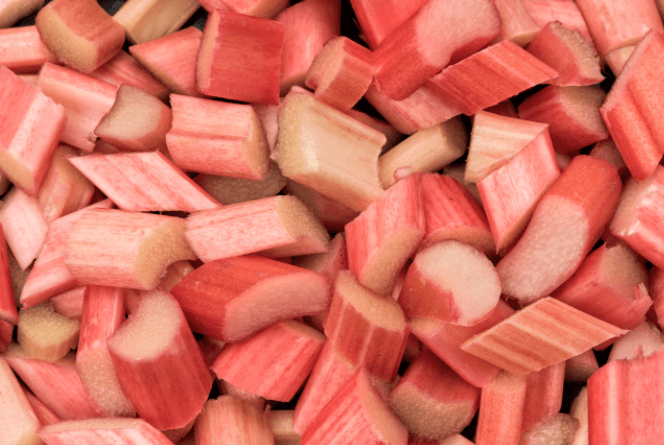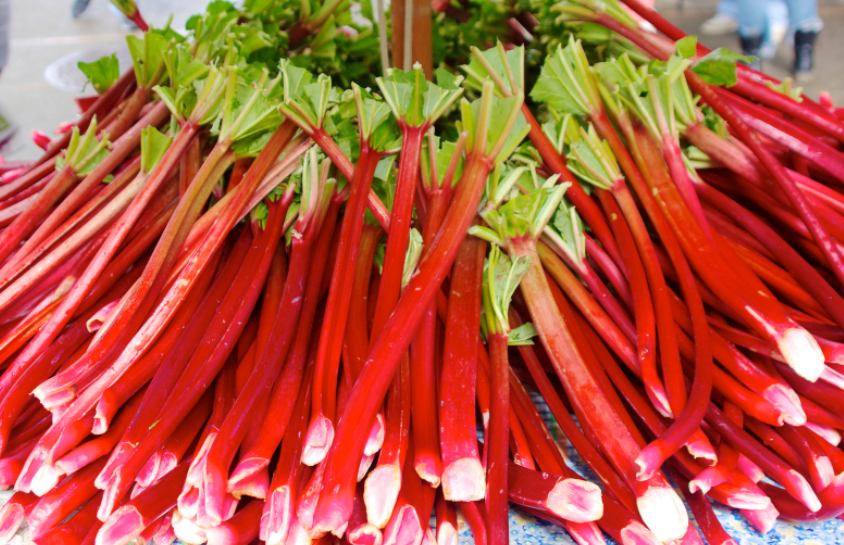How To Grow Your Own Rhubarb
Why grow rhubarb and how to grow rhubarb, it is easy to grow, and few can resist warming crumble or rich, refreshing fool flavored with this tangy, sweet fruit. Either way, rhubarb is enjoying a spot of much-deserved popularity.
If you enjoy cooking with rhubarb, here’s how to plant the best varieties.
Summer is here, and rhubarb is experiencing a surge in popularity. Now is a perfect time to plant the fruit, and avid gardeners should be aware that it is straightforward to cultivate.
In around 18 months, you will enjoy the fruits of your labor.
Rhubarb is distinctive in that it is a vegetable (a leaf stalk) that is most commonly used in desserts; the stalks can even be dipped in sugar and eaten raw.
It is also a herbaceous plant that dies back in the fall and returns with incredible vigor in the spring.
In January, it can be coaxed to produce sweeter sticks and more succulents by covering it with a terracotta forcing container or garbage can.
How To Grow Rhubarb
Buy bare-rooted “crowns” or beg your neighbors for divisions. The optimal time to plant rhubarb crowns is between November and December when they are dormant, but you may also plant them in the spring.
Although rhubarb prefers full sun, it can tolerate partial shade. Ensure the soil is rich and damp so that it does not become waterlogged, and eradicate all weeds. Plant crowns approximately 3 to 4 feet apart with buds just covered.
Ensure that the crown is planted so that the top bud is beneath the surface. In March, add a balanced fertilizer, such as Growmore, and in June, apply nitrogen fertilizer, such as dried blood or sulfate of ammonium.
Mulch each plant with manure and a handful or two of Growmore or blood, fish, and bone. Once per week, water thoroughly during dry weather.
How To Harvest Rhubarb
Allow plants to establish in their first year. From the second spring on, harvest a small number of new stalks for approximately six weeks by pulling, not cutting.
After that, plants can be harvested regularly for several months, beginning in April, but only half of the stalks. Although rhubarb leaves are toxic, they can be added to a compost pile.
To give plants time to recover for the following year, harvesting should cease in July. Approximately every five years, divide clumps and remove flowering stems.
One clump is sufficient for most families, but you can “force” plants for extra-early, tender harvests if you have room for two or three.
Place straw over a particular clump in late winter and cover it with a large bucket or terracotta forcer to block the light.
In the warm, dark confines, plants will produce tender, pink stalks about a month earlier than those grown outdoors. A year is necessary for forced clumps to recover.
Rhubarb is a problem-free plant, but crown rot can develop in wet winter soils. The presence of thin, spindly, sometimes-split, and sap-oozing stems indicates plant stress. Water, fertilize and divide clumps as needed.
Where To Get Rhubarb Plants
Typically, rhubarb is sold as a crown, the underground portion of a one- or two-year-old plant that survives the winter. It should have a few wholesome buds. There is a limited selection of varieties available at garden centers.
If you desire uncommon varieties, you must purchase via mail order, including the Best Buys. Three crowns cost between $15 and $18. It is optimal to wait until the second year to harvest.
The most expensive option is to purchase potted plants, which can cost up to $35.99 for a three-liter pot. Finally, rhubarb can be grown from seed, and Glaskin’s Perpetual is excellent. However, this was one of the worst flavors in the taste test.
Rhubarb Blooming
Occasionally, rhubarb plants produce large flower spikes. These are magnificent and would fit in with a large herbaceous border.
Sadly, flowering weakens the plant and drastically reduces yield. Remove the flower stalks, discard the old clump’s center, or propagate.

How To Induce An Early Harvest
In January, exclude all light from the clump by covering it with a terracotta forcing pot or a plastic garbage can. To grow a flush of pale, succulent stalks, the crowns require a cold period followed by a frost-free period. Allow a forced plant a year to recover before moving it again.
How To Gather
Beginning in April, pull the stalks instead of cutting them. You will find that they detach without leaving a rotting stump. The leaves must be discarded as they are poisonous.
Always leave three or four sturdy stems and pull the tender young ones. Quit harvesting at the end of June to allow the plant to recover and build up reserves for the following year.
Rhubarb Varieties: What You Must Know
-
‘Timperley Early.’
One of the earliest rhubarb varieties, ‘Timperley Early,’ has a good tart flavor and progression from deep red to light green with red dots.
-
“Champagne Hawke’s”
The ‘Hawke’s Champagne’ rhubarb variety is available from the beginning to grow. It is a dependable rhubarb with sweet-tasting, currant-red stems ideal for forcing.
-
“Grandfather’s Favorite”
The ‘Grandpa’s Favorite’ rhubarb variety produces an abundant harvest of attractive, brightly-colored stems. It is one of the available midseason rhubarbs.
-
“Raspberry Red”
‘Raspberry Red’ rhubarb, a mid-to late-bloomer, is appropriately named for its sweet, red stems. There is no need to force an old Dutch variety of the plant that produces abundant fruit.























